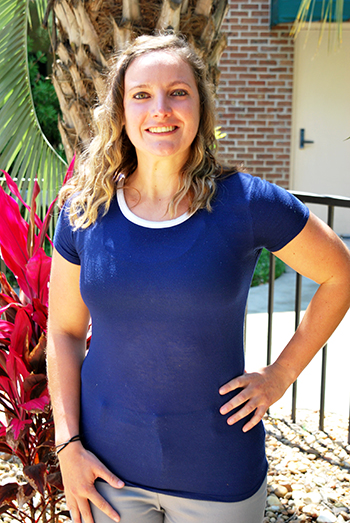How physical therapy can help with your shoulder pain
Orthopedics
Shoulder impingement syndrome is one of the more common conditions treated by St. Joseph’s/Candler physical therapists
Body aches and pains are a common part of life, especially as we age. However as common as they may be, that doesn’t mean you have to live the rest of your life in pain.
One option to deal with aches and pains is physical therapy. St. Joseph’s/Candler has five outpatient rehabilitation centers that offer physical, occupational and speech therapy.
One of the more common conditions physical therapists treat is shoulder impingement syndrome, also known as swimmer’s shoulder.

The shoulder is made up of several joints combined with tendons and muscles surrounding the collarbone, shoulder blade and humerus (upper arm bone) that allow for a great range of motion in your arm. Shoulder impingement syndrome occurs when the muscle and tissues in the shoulder get irritated due to repetitive, overhead motion.
“Those at risk for shoulder impingement syndrome include anyone who performs repeated motion like swimming, tennis or golfing or after an unusual one-time event, such as painting a room,” explains physical therapist Elizabeth McVicker, DPT, at St. Joseph’s/Candler’s Outpatient Therapy at The Landings Club. “Others at risk include those who have poor posture or someone who may have had an injury or fall affecting the shoulder.”
More than 200,000 cases of shoulder impingement syndrome are reported in the United States each year, according to the American Academy of Orthopedic Surgeons. One recent study suggests one in three people will have a shoulder impingement in their lifetime, with 20 percent of those being symptomatic.
Symptoms of shoulder impingement syndrome include:
- Shoulder pain across the shoulder to the side of the arm during both activity and rest
- Pain sleeping at night or general leaning on the shoulder
- Loss of strength and motion
- Sudden pain with lifting and reaching movements
- Difficulty doing activities that place the arm behind the back
You should not experience any numbness or tingling. Nor should you see visual signs of swelling. There will be swelling of the shoulder joint but it will not be outwardly evident. You may see redness or feel warmth in the shoulder area and it may be tender.
If left untreated, you are increasing your risks of a torn rotator cuff, which not only includes pain but also lack of function and can lead to surgical intervention. McVicker encourages anyone with shoulder pain to talk to their primary care doctor about seeking physical therapy.
How physical therapy can help
There are several options to treat shoulder impingement syndrome ranging from surgery to steroid injections to rest and ice. Evidence shows that physical therapy is an excellence treatment option with proven success, McVicker says.
When a patient comes in for physical therapy, the first session includes an examination and education. McVicker will help determine ways to manage the pain including ice, massages and/or electrical stimulation. She also will show you position changes, postural changes and other exercises that you can do at home to decrease pain and inflammation.
“Following that, therapy sessions include manual intervention to address joint tightness or loss of motion and progressive strengthening,” McVicker says.
Physical therapy patients should expect one to three visits a week, depending on the symptoms. Sessions last an hour and may continue for four to six weeks.
“Most patients who receive therapy have good outcomes with restoration of function with little to no pain and limitation,” McVicker says.
A physician’s referral is required for physical therapy. For more information or to find a physical therapist near you, visit our website.